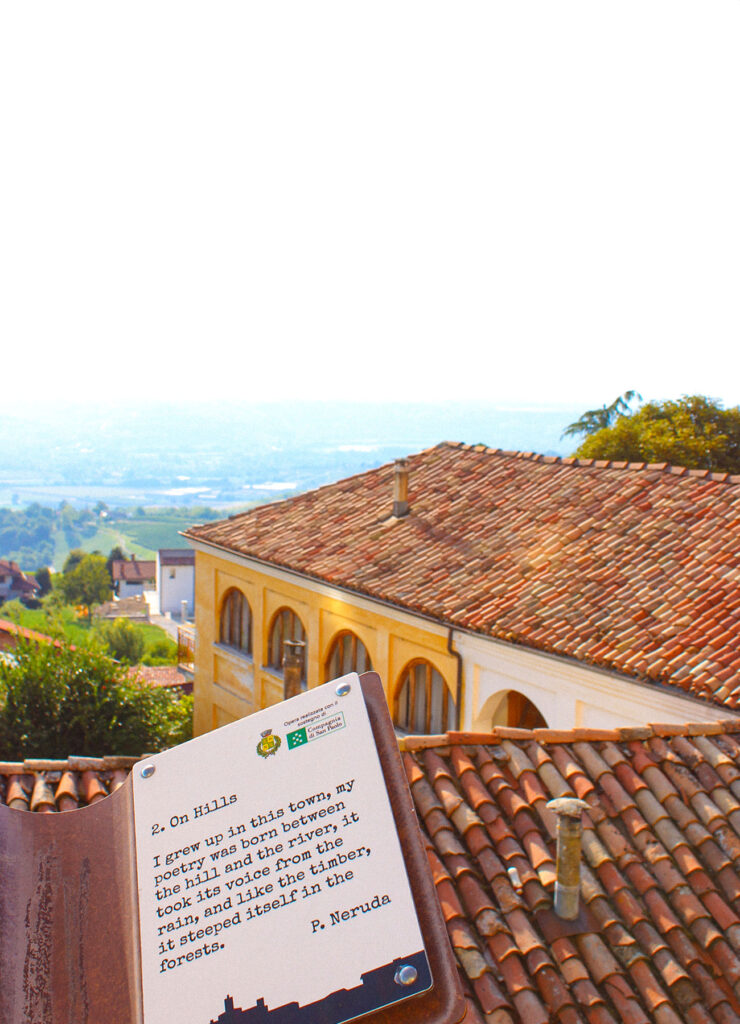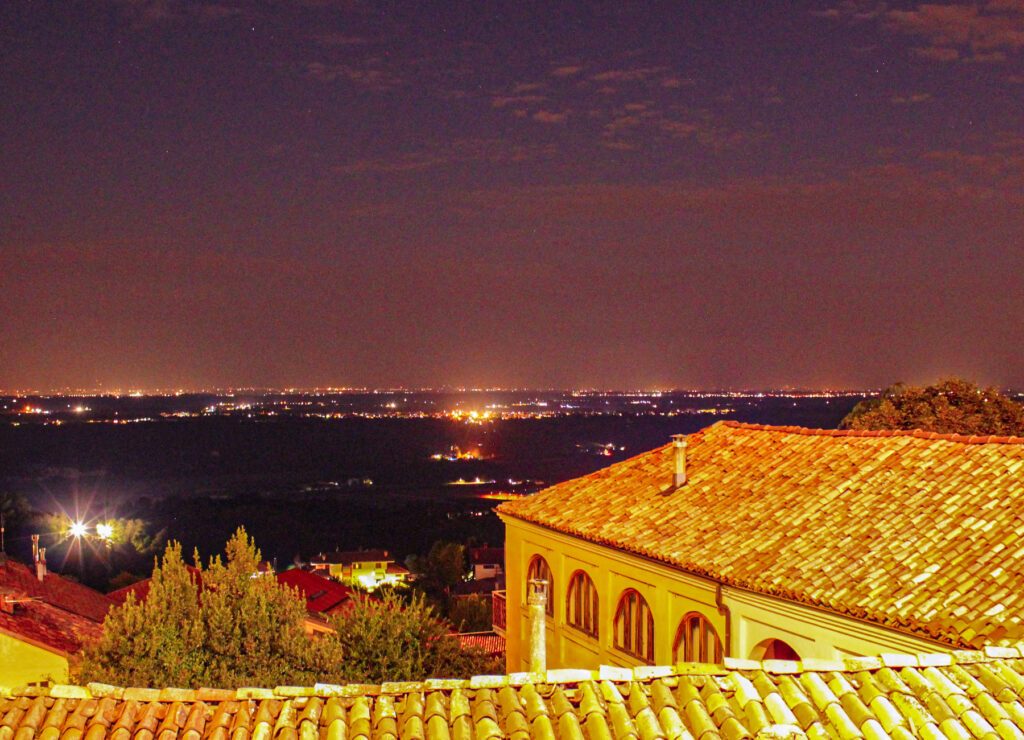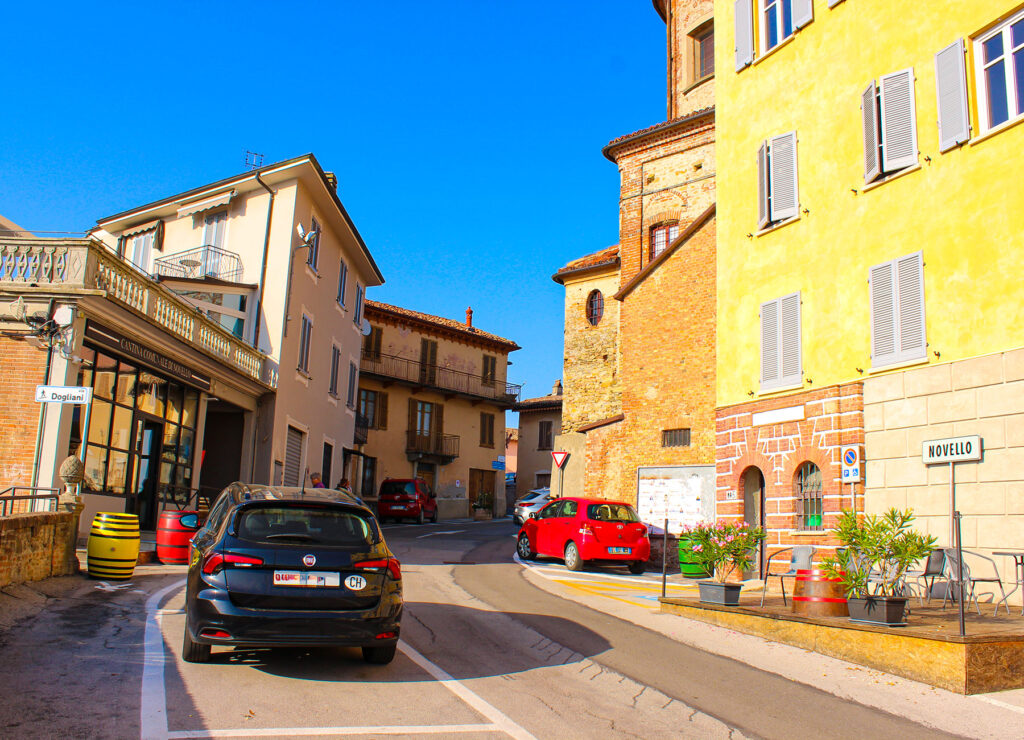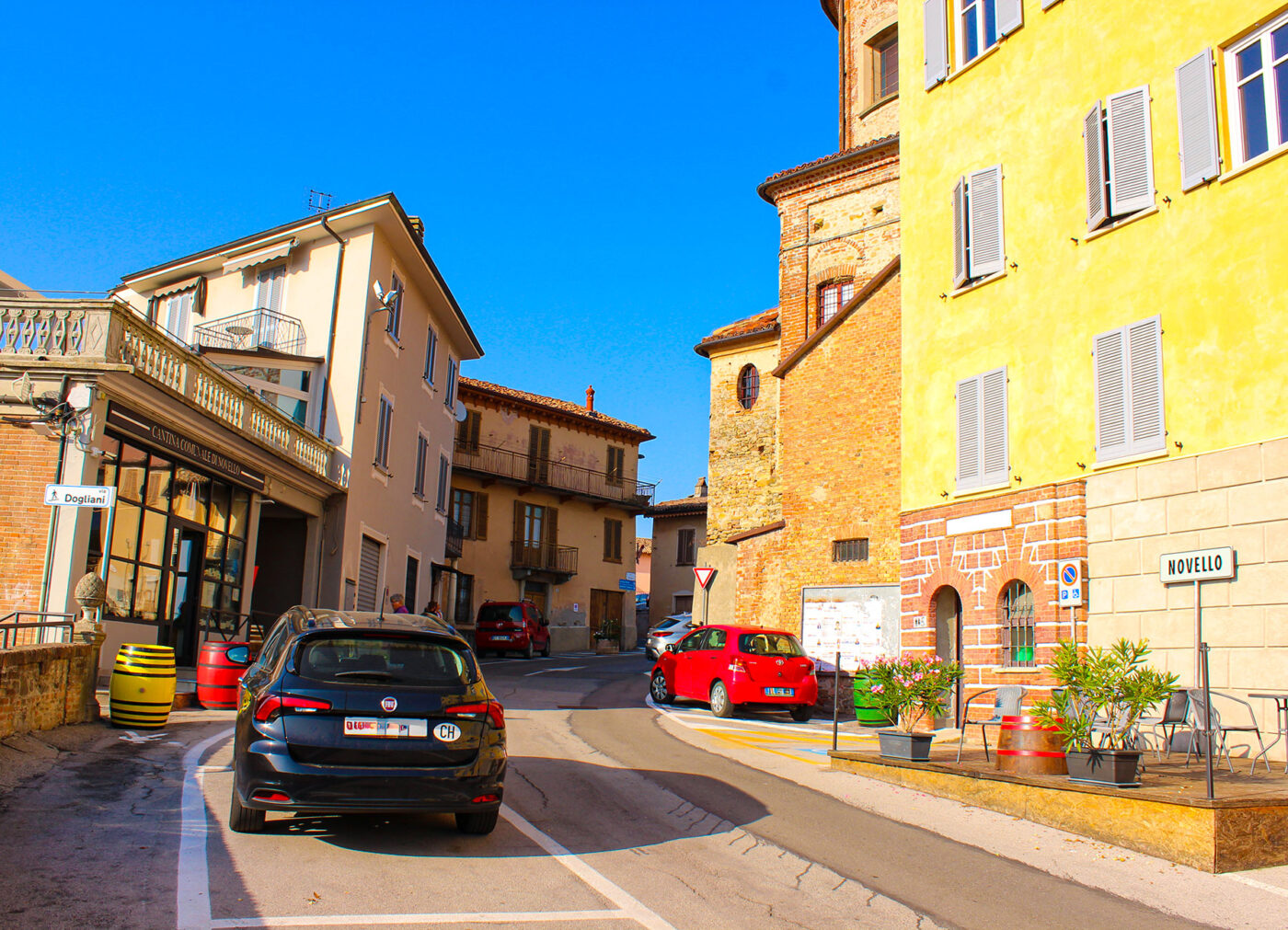The historic centre of the village of Novello (471 metres above sea level) stretches across the ridge of one of the many hills in the Langhe region. As a former imperial fiefdom, the old, wedge-shaped part of the village features several fortified houses, arched entrance gates, the parish church and the church of the brotherhood (18th century), the castle and, between these buildings, examples of ‘peasant’ architecture – signs of a culture that was and still is predominantly agricultural.
Novello, a town steeped in history, art and vineyards, offers visitors the peace and space to return to a ‘more human pace of life’, a unique landscape, hiking trails in an ecologically unspoilt environment, with gorges, springs, columns, country chapels and, above all, an insight into the authentic cuisine of the Langhe, rich in rustic and refined flavours.
‘Here, guests are as sacred as in Homer’s time.’ (As stated on the Novello website)
To the west, the terrain slopes gently down to the Tanaro River, on whose banks lies the village of Fornaci, bordering the municipality of Monchiero, and on the left bank, the village of Moriglione, the outermost edge of the municipality – on the border with Lequio Tanaro.
Until the beginning of the last century, residents on both banks crossed the river by ferry and, during harsh winters, relied on the frozen surface.
To the east, there is a viewpoint over the Langa del Barolo, which, like a large open fan, reveals magnificent vineyards laid out like gardens (a sea of rows of vines) and stretching like the steps of an amphitheatre on the slopes of La Morra, Serralunga d’Alba, Barolo, Castiglione Falletto, Perno, Monforte d’Alba and beyond Monforte d’Alba.
And, of course, Novello is a village of Barolo and Dolcetto d’Alba, Barbera d’Alba, Langhe Nebbiolo, magnificent DOC red wines and the white wines Pinot, Arneis and Nascetta.
The golden yellow (best served ice-cold) Nascetta is an indigenous white grape variety from Piedmont. Nascetta is now only grown in small quantities, exclusively in the Langhe with DOC classification, and can only be found around the village of Novello, covering an area of around 20 hectares.



